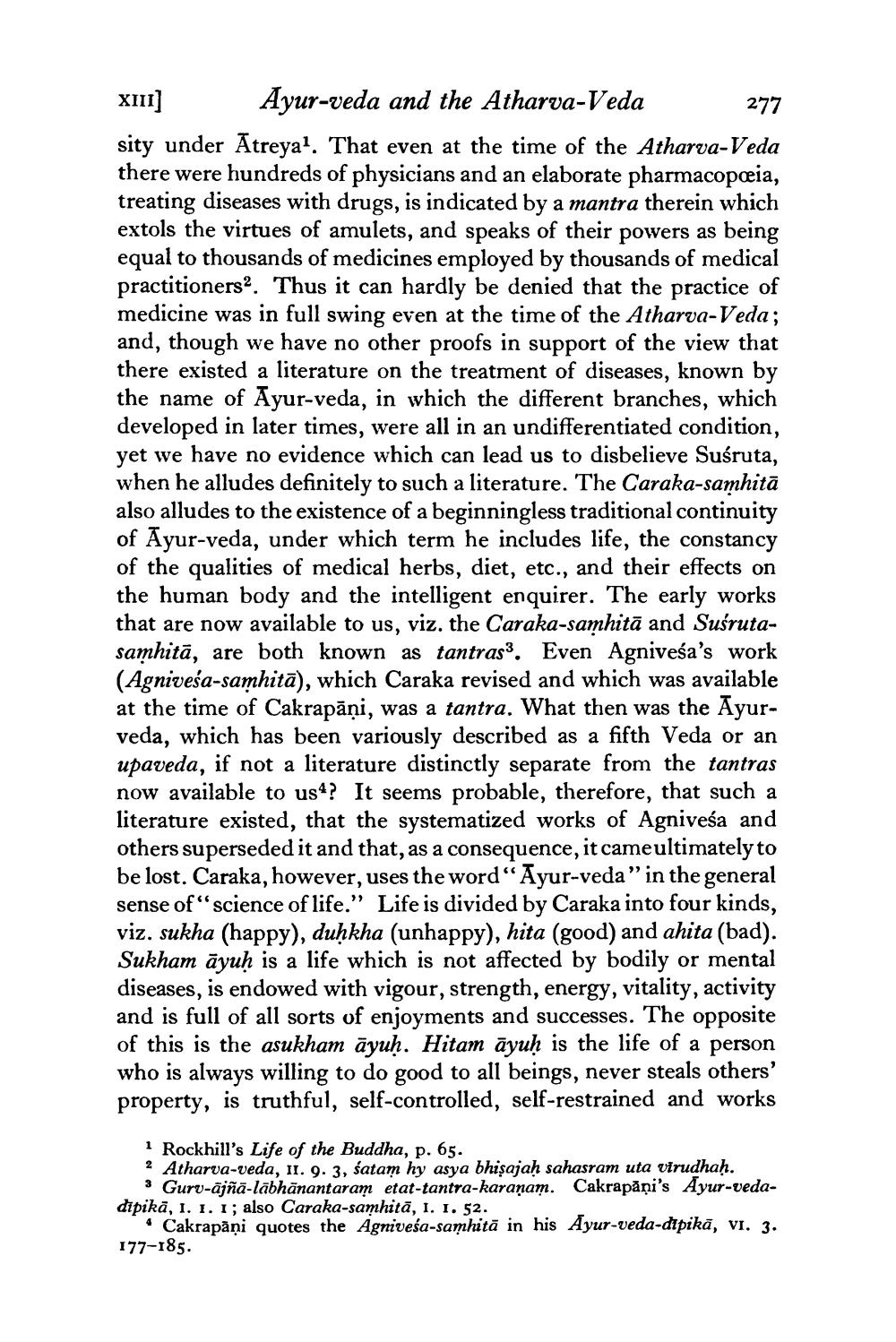________________
XII] Ayur-veda and the Atharva-Veda 277 sity under Atreyal. That even at the time of the Atharva-Veda there were hundreds of physicians and an elaborate pharmacopeia, treating diseases with drugs, is indicated by a mantra therein which extols the virtues of amulets, and speaks of their powers as being equal to thousands of medicines employed by thousands of medical practitioners. Thus it can hardly be denied that the practice of medicine was in full swing even at the time of the Atharva-Veda; and, though we have no other proofs in support of the view that there existed a literature on the treatment of diseases, known by the name of Ayur-veda, in which the different branches, which developed in later times, were all in an undifferentiated condition, yet we have no evidence which can lead us to disbelieve Suśruta, when he alludes definitely to such a literature. The Caraka-samhitā also alludes to the existence of a beginningless traditional continuity of Ayur-veda, under which term he includes life, the constancy of the qualities of medical herbs, diet, etc., and their effects on the human body and the intelligent enquirer. The early works that are now available to us, viz. the Caraka-samhitā and Suśrutasamhitā, are both known as tantrasy. Even Agniveśa's work (Agniveśa-samhitā), which Caraka revised and which was available at the time of Cakrapāņi, was a tantra. What then was the Ayurveda, which has been variously described as a fifth Veda or an upaveda, if not a literature distinctly separate from the tantras now available to us? It seems probable, therefore, that such a literature existed, that the systematized works of Agniveśa and others superseded it and that, as a consequence, it cameultimately to be lost. Caraka, however, uses the word“Ayur-veda"in the general sense of “science of life.” Life is divided by Caraka into four kinds, viz. sukha (happy), duḥkha (unhappy), hita (good) and ahita (bad). Sukham āyuḥ is a life which is not affected by bodily or mental diseases, is endowed with vigour, strength, energy, vitality, activity and is full of all sorts of enjoyments and successes. The opposite of this is the asukham āyuḥ. Hitam āyuh is the life of a person who is always willing to do good to all beings, never steals others' property, is truthful, self-controlled, self-restrained and works
i Rockhill's Life of the Buddha, p. 65. 2 Atharva-veda, 11. 9. 3, śatam hy asya bhișajah sahasram uta virudhah.
3 Guru-ājñā-lābhānantaram etat-tantra-karanam. Cakrapāņi's Ayur-vedadipikā, 1. 1. I; also Caraka-samhitā, 1. 1. 52.
* Cakrapāņi quotes the Agniveśa-samhita in his Ayur-veda-dipikā, VI. 3. 177-185.




